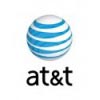Telecom Terms
PBX
A private branch exchange (PBX) is a system that connects telephone company trunk lines with individual user lines and equipment inside the organization. A PBX allows an organization to have fewer outside lines than extensions because it is safe to assume that not all extensions will be in use at once. The PBX acts like a telephone company switch, connecting outside callers with inside extension lines and extensions with each other as needed. PBXs are deemed CPE because they are owned and operated by the customer (business, hospital, etc.), not the local telephone company.
POP
Point of Presence. A POP is the place your long distance carrier, called an IXC, terminates your long distance lines. Each IXC can have multiple POP's and all long distance phone connections go through these POPs.
POTS
Plain Old Telephone Service. Traditionally, this is the term used to describe telephone lines that are connected to most residential and small business users.
PRI - Primary Rate Interface
An integrated services digital network (ISDN) interface standard (a) that is designated in North America as having a 23B+D channels, (b) in which all circuit-switched B channels operate at 64 kb/s, and (c) in which the D channel also operates at 64 kb/s. Note- The PRI combination of channels results in a digital signal 1 (T1) interface at the network boundary.







